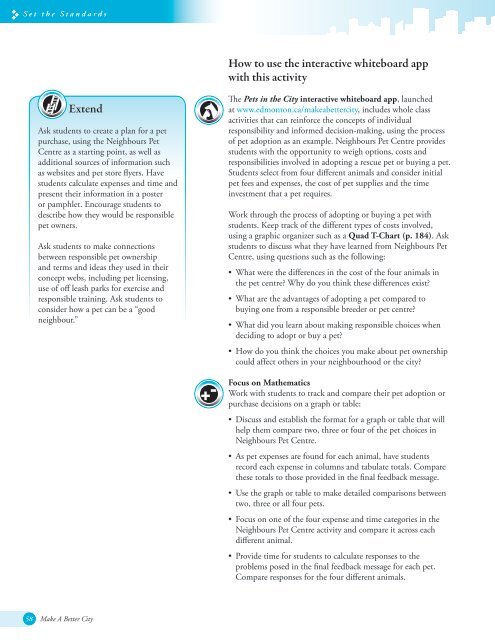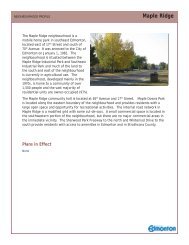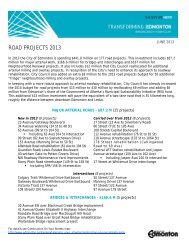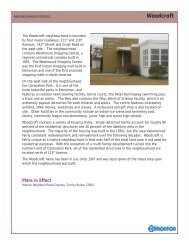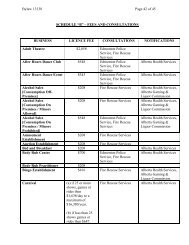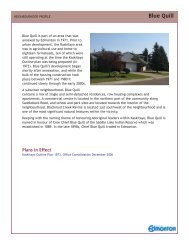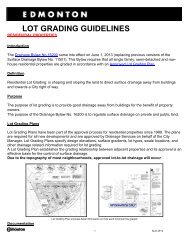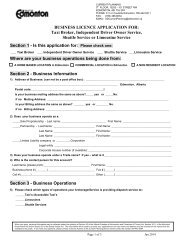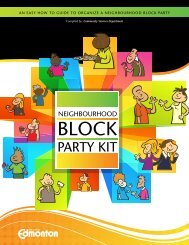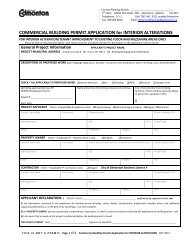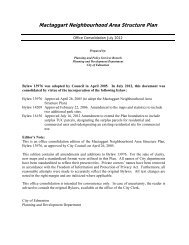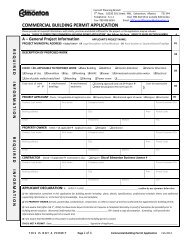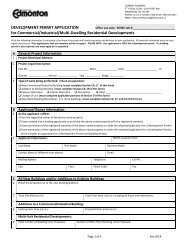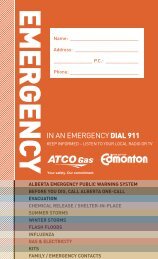Full Resource - City of Edmonton
Full Resource - City of Edmonton
Full Resource - City of Edmonton
You also want an ePaper? Increase the reach of your titles
YUMPU automatically turns print PDFs into web optimized ePapers that Google loves.
Set the Standards<br />
How to use the interactive whiteboard app<br />
with this activity<br />
Extend<br />
Ask students to create a plan for a pet<br />
purchase, using the Neighbours Pet<br />
Centre as a starting point, as well as<br />
additional sources <strong>of</strong> information such<br />
as websites and pet store flyers. Have<br />
students calculate expenses and time and<br />
present their information in a poster<br />
or pamphlet. Encourage students to<br />
describe how they would be responsible<br />
pet owners.<br />
Ask students to make connections<br />
between responsible pet ownership<br />
and terms and ideas they used in their<br />
concept webs, including pet licensing,<br />
use <strong>of</strong> <strong>of</strong>f leash parks for exercise and<br />
responsible training. Ask students to<br />
consider how a pet can be a “good<br />
neighbour.”<br />
The Pets in the <strong>City</strong> interactive whiteboard app, launched<br />
at www.edmonton.ca/makeabettercity, includes whole class<br />
activities that can reinforce the concepts <strong>of</strong> individual<br />
responsibility and informed decision-making, using the process<br />
<strong>of</strong> pet adoption as an example. Neighbours Pet Centre provides<br />
students with the opportunity to weigh options, costs and<br />
responsibilities involved in adopting a rescue pet or buying a pet.<br />
Students select from four different animals and consider initial<br />
pet fees and expenses, the cost <strong>of</strong> pet supplies and the time<br />
investment that a pet requires.<br />
Work through the process <strong>of</strong> adopting or buying a pet with<br />
students. Keep track <strong>of</strong> the different types <strong>of</strong> costs involved,<br />
using a graphic organizer such as a Quad T-Chart (p. 184). Ask<br />
students to discuss what they have learned from Neighbours Pet<br />
Centre, using questions such as the following:<br />
• What were the differences in the cost <strong>of</strong> the four animals in<br />
the pet centre Why do you think these differences exist<br />
• What are the advantages <strong>of</strong> adopting a pet compared to<br />
buying one from a responsible breeder or pet centre<br />
• What did you learn about making responsible choices when<br />
deciding to adopt or buy a pet<br />
• How do you think the choices you make about pet ownership<br />
could affect others in your neighbourhood or the city<br />
Focus on Mathematics<br />
Work with students to track and compare their pet adoption or<br />
purchase decisions on a graph or table:<br />
• Discuss and establish the format for a graph or table that will<br />
help them compare two, three or four <strong>of</strong> the pet choices in<br />
Neighbours Pet Centre.<br />
• As pet expenses are found for each animal, have students<br />
record each expense in columns and tabulate totals. Compare<br />
these totals to those provided in the final feedback message.<br />
• Use the graph or table to make detailed comparisons between<br />
two, three or all four pets.<br />
• Focus on one <strong>of</strong> the four expense and time categories in the<br />
Neighbours Pet Centre activity and compare it across each<br />
different animal.<br />
• Provide time for students to calculate responses to the<br />
problems posed in the final feedback message for each pet.<br />
Compare responses for the four different animals.<br />
58<br />
Make A Better <strong>City</strong>


